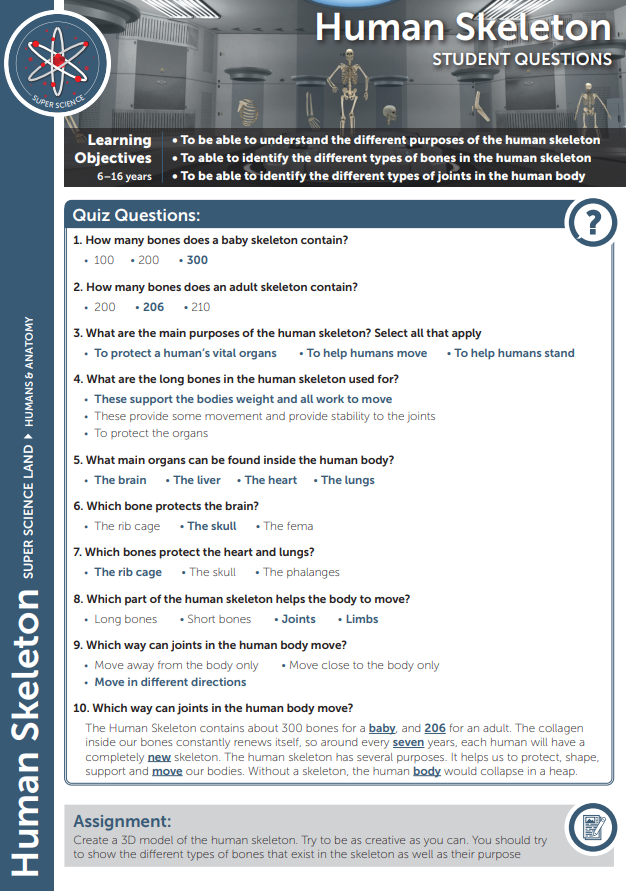 Loading...
Loading...
Initial language selection is based on your web browser preferences.
# Learning objectives 1: To be able to understand the different purposes of the human skeleton.{.info} 2: To able to identify the different types of bones that exist within the human skeleton.{.info} 3: To be able to identify the different types of joints that exist within the human body.{.info} # WHAT IS A SKELETON?{.objective .objective1} In this section, a description of the different types of bones that exist in the human skeleton will be provided. These bones include, short bones, long bones, flat bones, irregular bones and sesamoid bones. # HOW DOES THE HUMAN SKELETON PROTECT THE VITAL ORGANS?{.objective .objective2} In this section, the purpose of the human skeleton will be outlined. The human skeleton has several jobs, such as supporting the muscles to generate movement, support the body, and protect vital organs. By exploring the scene, clues should be identified to identify examples of support, protection and movement, that the skeleton is responsible for. # HOW DOES THE HUMAN SKELETON HELP US TO MOVE?{.objective .objective3} In this section, connections between different bones will be described as joints. The skeleton is able to create specific movements across the joints, and these can be straight, rotations, or both. Exploring the scene, observations can be made how joints move specific limbs. # Teacher Resources ### Download the Teacher notes for the Human skeleton [(https://avnfs.com/AVcSiN35FQM87hs-ecazD-5BFCYVib-47GKis0fDESA?size=813731&type=application%2Fpdf&name=Human%2520Skeleton%2BTeachers%2BNotes%2BOnly.pdf) ###Download the answers to the quiz [](https://avnfs.com/XMMhw5j-WNamj3R_wriRnOMR_UiheI9mch9N0q95EJE?size=464269&type=application%2Fpdf&name=Human%2520Skeleton%2BQuiz%2BAnswers.pdf) ### Download the Quiz on the Human Skeleton [](https://data.avncloud.com/activities/792634/files/Human%20Skeleton+Quiz+Only.pdf?date=1676465352&size=95204&md5=631c2ac4ac912b94a09f0c47d4d2531e)